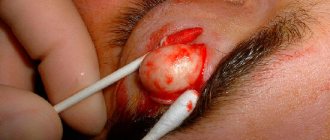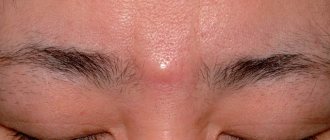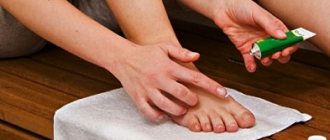Why does fungus appear?
Mycosis of the heels is an infectious skin lesion on the back of the foot, which is caused by parasitic fungi:
- microsporum;
- trichophyton;
- candida;
- epidermophyton.
People of certain professions are susceptible to mycosis of the heels - athletes, workers in hot shops, military personnel, miners.
Infection occurs through contact with sick people or the use of objects contaminated with spores. According to statistics, in 60-80% of cases, mycosis of the heels is caused by Trichophyton rubrum (red trichophyton). The entry points for infection are:
- cracks;
- abrasions;
- ulcerations;
- cuts.
Infection occurs when the immune defense is critically reduced. In dermatology, there are many factors that provoke heel fungus:
- lack of personal hygiene;
- circulatory disorders in the lower extremities;
- irrational use of cytostatics and antibiotics;
- skin injuries on the legs;
- sedentary work;
- atherosclerosis of peripheral vessels;
- abuse of hormonal contraceptives;
- obliterating endarteritis (narrowing of the arteries of the legs);
- vitamin and mineral deficiency;
- varicose veins;
- psycho-emotional stress;
- wearing tight shoes and synthetic socks;
- excessive sweating (hyperhidrosis);
- unbalanced diet;
- bad habits;
- vegetative-vascular dystonia;
- diabetes.
The risk group includes people suffering from flat feet, HIV infection, and endocrine pathologies.
The likelihood of infection increases when visiting public baths, locker rooms, and swimming pools without personal rubber slippers. Mycosis is detected mainly in adults, and 3 times more often in residents of large cities.
What fungus looks like on the heels: signs and forms
Cracks in the heels, unpleasant odor, thickening and flaking of the skin are obvious symptoms of a fungal infection on the back of the foot. The severity of the clinical picture depends on the type of pathogen and the nature of the course of mycosis. Indicates foot fungus:
- pronounced skin pattern;
- peeling;
- redness;
- blistering rash;
- moderate to severe itching.
In clinical dermatology, there are several forms of heel fungus:
- Squamous is the mildest form of the fungus, in which the infection penetrates the surface layers of the skin. It manifests itself as itching and peeling of the feet, blistering rashes of a pale gray hue. A border of peeling skin is formed at the periphery of the lesions.
- Hyperkeratotic – characterized by severe thickening and roughening of the skin. Due to the decrease in elasticity, it cracks, which leads to the formation of deep cracks.
- Intertriginous is a common form of mycosis, in which the interdigital spaces are first affected. Over time, the fungus spreads to the entire foot. Sometimes it moves to the flexor surfaces. It manifests itself as weeping, severe itching, erosions and cracks.
- Dyshidrotic is a vesicular form of the fungus, in which multi-chamber vesicles form on the skin. Most often, the interdigital folds, skin of the soles and arches of the foot are affected. Over time, the bubbles open, and in their place erosions of a bright red hue form.
Different forms of mycosis of the heels can transform into one another or be combined.
If left untreated, self-infection occurs. Over time, the fungus spreads to the interdigital area, dorsum of the foot, and shin. In case of chronic fungal infection, the nails are affected (onychomycosis).
Fungus on feet
Tatyana T. 02/15/2022 I would like to start with my personal conclusion - a wonderful clinic! And the doctors here are simply magicians! I want to write in detail about my experience, because I know from myself that it is very difficult to choose a clinic and doctors for treatment. You read on the Internet and can’t choose.
I came here from the Internet. I read about different clinics of this kind, and it seemed to me that Podology Clinic was the best fit. And I didn’t regret it.
I have a very long-standing (several decades) neglected problem - nail fungus. Almost all of the toenails were not only affected, but already looked simply scary and indecent. Due to the lack of pain, I didn’t go to the doctors for a long time, and when I did, they began to assure me that it was difficult to treat, and why – there was no pain. Little by little I tried this and that. And I decided a long time ago that I would always live with this.
I liked the clinic at first sight. Yes, there were indeed several people at the first consultation. But each of them is an expert in his own field. Since I am very familiar with my problem and read a lot about it, I was able to immediately assess the necessity and legality of the proposed treatment. The course of treatment was explained to me clearly and clearly.
As a result, I have been receiving treatment at the clinic for more than six months. After the first two procedures, I saw not just improvements - but the sprouts of real recovery, which deep down I didn’t really count on (didn’t believe). I can't find words to describe the happiness I feel looking at my "new" legs.
All those times when I came to the clinic, I had to wait no more than 5 minutes. The staff is very friendly. Emails are answered quickly and clearly. I think the prices are justified.
I want to especially thank several doctors. First of all, the chief podologist, Khristina Nikolaevna Poletskaya. It was she who not only explained the treatment strategy at the first consultation, but also won my trust with her warmth and professionalism. When I was away for a long time and asked for advice by email, Khristina Nikolaevna answered patiently and immediately. I always have the feeling that even when I leave, I remain a patient.
And I also want to write about two doctors: Irina Aleksandrovna Sadokhina and Olga Vladimirovna Kadakova. They both seem to me like sorceresses who bring happiness. This may sound a little pompous, but for a person who has been embarrassed to walk in open shoes for decades, the results achieved in just 7 months truly look like a miracle.
I recommend this clinic based on the results of my treatment. Thank you, Podology Clinic!
Tatyana, we were very glad to receive such a detailed and pleasant review about our clinic and specialists! We are doubly happy when we manage to solve a health problem that has been dragging on for years - this is always a significant victory for our team of doctors and podiatrists. Thank you for choosing and recommending the Podology Clinic to people with the same goals of restoring health and aesthetics. Thank you for the time you devoted to us, creating such a detailed “report” on the treatment, for your high assessment of the qualifications of Khristina Nikolaevna, Irina Alexandrovna and Olga Vladimirovna! We wish you health and a decent quality of life!
What is the danger of the disease
Heel fungus progresses quickly in children and adults with weak immune systems. Incorrect or absent treatment leads to the spread of infection, damage to the skin of the limbs and torso. Erosion and cracks in the heels increase the risk of streptococcal infection, which is fraught with the following complications:
- thrombophlebitis;
- lymphangitis;
- erysipelas;
- lymphadenitis;
- streptoderma.
In patients with rubromycosis, erosions occur in the heel area, prone to peripheral growth. Externally, the disease is similar to erythema nodosum or vasculitis.
Diagnostics
Fungal diseases are diagnosed by a dermatologist or mycologist. If the skin of the heels thickens and cracks, the doctor prescribes a comprehensive diagnosis:
- Dermatoscopy is the examination of affected areas of the skin under multiple magnification of a dermatoscope. It is used to assess structural changes in the epidermis in lesions.
- Luminescent examination - diagnosis of mycoses using a Wood's lamp. The procedure is performed in a dark room. A greenish glow in the skin of the heels indicates a fungus.
- Skin scraping microscopy is a laboratory analysis of tissue samples. A mycotic infection is indicated by the presence of fragments of mycelium and fungal seeds in the scraping.
- Sowing scrapings onto nutrient media is the cultivation of pathogenic microorganisms, during which the causative agent of the infection is determined.
Based on the results of a comprehensive diagnosis, the mycologist determines the form of fungal infection of the feet - candidiasis, rubromycosis, athlete's foot.
Depending on the cause of heel damage, the patient may require additional consultation with a vascular surgeon, endocrinologist, orthopedist, or podiatrist.
How and what to treat fungus on the heels
The fungal infection is destroyed by local and systemic antimycotic agents. The former kill the fungus in the affected areas, and the latter - throughout the body. The course of therapy is compiled taking into account:
- pathogen;
- the extent of the lesions;
- complications.
Typically, drug treatment for mycosis of the heels takes no more than 3 months. If the fungus affects the nails, therapy is extended for another 3-4 months. To assess the effectiveness of treatment, a repeat luminescent study is performed.
Local treatment
External treatment of heel fungus is carried out with antifungal creams, ointments and gels. The dermatologist prescribes products based on clotrimazole, ciclopirox, naftifine, terbinafine:
- Imazol;
- Fungisan;
- Terbizil;
- Exoderil;
- Kandisan;
- Batrafen;
- Candide;
- Exic.
To quickly cure a fungal disease, therapy includes ointments and creams with different pharmacological properties:
- anti-inflammatory (Arnica, Efkamon) - reduce inflammation, prevent erosive damage to the skin of the heels;
- analgesics (Anestezin, Benzocaine) – eliminate pain;
- corticosteroids (Lorinden S, Betasalik) – eliminate itching, which prevents scratching;
- keratolytic (Lorinden A, Bensalitin) – exfoliate dead cells, prevent thickening and cracking of the heels;
- antiseptic (Miramistin, BoroAyur) – destroy pathogenic flora, prevent secondary infections;
- improving blood microcirculation (Solcoseryl, Actovegin) - prevent blood stagnation, stimulate local immunity;
- healing (Wundehil, Panthenol) - accelerate skin regeneration in lesions.
Hormonal ointments are not used for weeping or erosive heels.
During the entire treatment period, it is recommended to treat closed shoes with antiseptics - Octenisept, Chlorhexidine, Miramistin - at least 1-2 times a week. After recovery, it is better to throw away the shoes in order to prevent recurrence of the fungus.
Pills
Systemic treatment of heel fungus is carried out when local therapy is ineffective. To destroy the infection, medications are prescribed based on the following active ingredients:
- ketoconazole – Dermazole, Nizoral, Apo-ketoconazole;
- fluconazole – Medoflucon, Kandizol, Diaflu, Diflucan;
- terbinafine – Binafin, Terbizil, Mycofin, Atifan, Terbinox;
- itraconazole - Iconazole, Mycostop, Orungal, Izol, Trioxal.
Tablet remedies for fungus are taken in courses of 1 week. For lesions of the heels, interdigital area and nails, Griseofulvin, a fungistatic antibiotic, is recommended. Its components accumulate in the cells of nails, hair and skin, which leads to the destruction of infection.
Hardware methods
To quickly get rid of heel fungus, they resort to physiotherapeutic procedures. Their action is aimed at:
- acceleration of blood circulation in the extremities;
- pain relief;
- healing of erosions;
- strengthening local immunity.
Depending on the indications, UV therapy and laser therapy are prescribed. Particular attention is paid to caring for the skin of the feet. If heels and nails are affected, a medical pedicure is recommended, which is performed in several stages:
- feet are disinfected with a solution of antiseptic;
- feet are steamed in a bath of decoction of medicinal herbs;
- Calluses and keratinized skin are removed with a special milling cutter;
- use an abrasive attachment to clean off the top layer of nails;
- heels and nail plates are treated with antifungal ointment.
For dermato- and onychomycosis, therapeutic pedicures are done up to 2 times a week. It prevents thickening and cracking of the heels.
Traditional medicine
Herbal medicine, which can be carried out at home, is effective in the fight against fungus. To soften the skin on the heels and heal wounds, baths, applications, tonics, compresses, and lotions are used.
Effective remedies for mycosis of the heels:
- Herbal bath. Mix 2 tbsp. l. chamomile, St. John's wort and calendula. Pour in 3 liters of water and boil over low heat for 3-5 minutes. The feet are immersed in a filtered warm broth for 20-25 minutes. Take baths up to 3 times a day.
- Onion lotions. Large onions are passed through a meat grinder. Wrap the pulp in gauze and keep it on the skin of the heels for 10-15 minutes. Perform the procedure up to 3-4 times a day.
- Compress. 1 tbsp. l. Boil chopped calamus root in 250 ml of water for 4 minutes. Add 3-4 drops of eucalyptus oil. Soak a cotton-gauze bandage in the broth and apply to the heels for half an hour up to 4 times a day.
- Applications with soap. A piece of laundry soap is ground on a grater. 3 tbsp. l. The shavings are mixed with warm mineral water until a creamy mass is obtained. Add 7-10 drops of tea tree oil. Treat the affected areas with the mixture. After 15-20 minutes, wash off with warm water.
- Foot toner. Dilute ½ tsp in 30 ml of mineral water. garlic juice and medical alcohol. Soak a cotton pad in the solution and wipe the heels, feet and interdigital area with it three times a day.
Tea tree oil is ideal for disinfecting and softening the skin. They treat heels before going outside.
Cracked heels: cosmetic defect or serious problem?
Many people, especially women, complain that cracked heels interfere with an active life, wearing nice shoes, and sometimes even the slightest heel crack can cause severe pain. This is not only a cosmetic defect, but a prerequisite for the development of serious pathology in the body. Therefore, it is very important to take timely measures and contact a specialist. In this article we talk about why cracked heels can form, what their danger is, where to start treatment, and what measures are most effective in combating cracked skin on the feet.
Why do problems with rough skin on the feet and cracked heels occur?
The skin of the plantar surface of the feet is thick, hairless and rich in sweat glands. Also, healthy skin on the heels should be elastic. A distinctive feature is that this area has the thickest surface layer of skin. In places that serve to support bones (for example, in the heel area), there is well-defined subcutaneous fatty tissue that protects the bone from external pressure.
Being subjected to constant stress, which increases significantly with foot deformities, wearing uncomfortable shoes, during active sports, i.e. in response to a mechanical effect on the skin of the feet, a response occurs in the form of increased cell division in the surface layer of the skin. Ultimately, this leads to the development of hyperkeratosis - thickening of the superficial stratum corneum. The skin of the feet becomes harder, less elastic, and its sensitivity to external influences decreases. Thus, the properties of the skin change.
What can cause cracked heels?
Frequent causes of cracked heels are fungal infections of the skin of the feet, allergic diseases, eczema, psoriasis, and various types of keratoderma. This may also be a consequence of mechanical influences: wearing tight or uncomfortable shoes, walking for a long time. If a person spends all day on his feet, they swell, blood circulation is impaired and, as a result, the condition of the skin of the soles and heel area suffers. A lack of vitamins or an excess of them can also negatively affect the appearance of the heels. Cracks in the heels can appear due to impaired metabolism, diseases of the endocrine and cardiovascular systems.
Are these troubles really that serious?
The appearance of cracks is accompanied by severe pain, which reduces the ability to work and limits the possibility of active sports. Cracks are dangerous, first of all, because they are “gates” for the penetration of pathogenic microorganisms, which can cause inflammation and lead to many undesirable consequences.
What is the correct, and most importantly, effective treatment?
Before starting treatment for cracked heels, it is necessary to find out their cause, consult with a dermatologist, and carry out the necessary laboratory tests. Treatment must be specialized, since in the presence of skin diseases, even the most thorough heel care will not give noticeable results. For example, foot fungus is treated with special antifungal drugs, which only a specialist can help you choose. If the cracks were caused by improper care or wearing bad shoes, you should try to change the conditions that contributed to the disease.
What can you recommend for caring for your feet at home?
All home treatments are effective in cases where dry skin on the heels is not associated with any disease. At home, baths of soap and soda help soften and cleanse the skin best: for two liters of hot water you need to take a tablespoon of soda and a tablespoon of soap. The duration of the procedure is 15 minutes. Immerse your feet in the bath and massage your heels a little, without making much effort.
To combat rough skin on the feet, ointments containing 15-20% urea and 5% salicylic acid are used. They moisturize the skin and soften it. To heal cracks, you can use drugs with methyluracil, vitamin B5, and antimicrobial action. To prevent cracked heels, you should also moisturize the skin with warm olive oil, massage, and use a rich cream or ointment with Vaseline.
It should be remembered that these simple tips will only help in properly caring for the skin of your heels. However, only a qualified dermatologist can determine the true causes of skin changes.
You can get full advice on the diagnosis, treatment and prevention of cracked heels from dermatologists at the Vita Medical Center. Our specialist will study each individual case and offer the most effective preventive and treatment measures.
Prevention
Preventive measures are aimed at strengthening the immune system and eliminating factors that provoke the proliferation of the fungus. To prevent mycosis of the heels you need to:
- maintain personal hygiene;
- disinfect closed shoes with antiseptics;
- use personal hygiene products;
- promptly treat skin infections;
- give up synthetic socks in favor of cotton ones;
- eat a balanced diet;
- use rubber slippers when visiting public baths;
- take vitamin and mineral complexes twice a year;
- treat the interdigital area with antifungal powders.
With weak immunity and endocrine disorders, the risk of infection with a fungus increases by 2-3 times. For such diseases, you need to be examined by a dermatologist twice a year. Timely detection and treatment of mycosis of the heels reduces the likelihood of complications - streptoderma, thrombophlebitis.
Treatment of fungal infections
Thrush is treated with antifungal agents that are applied to the skin or mucous membranes. Systemic therapy is also prescribed. If you treat only the symptoms, a relapse will soon occur. The cause of the disease should be combated by strengthening the body’s protective functions.
Treatment is carried out on an outpatient basis. Hospitalization is necessary only in case of severe disease and in the presence of concomitant pathologies.
Treatment of fungal infections in children has the following approach:
- prescribing monotherapy or a combination of systemic and external antimycotic agents;
- the use of immunostimulants, glucocorticoids and antihistamines.
To increase the effectiveness of drug therapy, multivitamin complexes and physiotherapeutic procedures (DMV, therapy, darsonvalization, magnetic therapy, medicinal electrophoresis) are prescribed. Treatment should be carried out 2-3 times a day. The hair is shaved and the crusts are carefully removed.
When localized on the feet and hands, it is recommended to use special pastes, creams and ointments based on clotrimazole, neftifine or terbinafine. If a bacterial infection occurs, it becomes necessary to use antibiotics. For protracted and severe fungus of the nails, face and body skin, and hair in a child, antimycotic drugs containing fluconazole, itraconazole or griseofulvin are indicated.
For onychomycosis, it is necessary to use the drug until the nail grows completely. If drug treatment is ineffective, then surgical removal of the nail plates is performed.
To permanently defeat an infectious disease, you need to use the right medications and adhere to a certain diet. Self-medication in this case can lead to the development of serious complications.
Foods that should be excluded from the diet:
- Sugar, in any variety - honey, cane sugar, dextrose, fruit, malt and beet sugar, maple syrup, etc.
- Refined carbohydrates - white bread, buns, cakes or cookies, light noodles, white rice, etc.
- Products containing yeast.
When treating fungal infections in children, it is recommended to keep the affected area dry by frequently changing underwear or diapers. After showering and bathing, it is advisable to pat your skin well with a soft terry towel.










